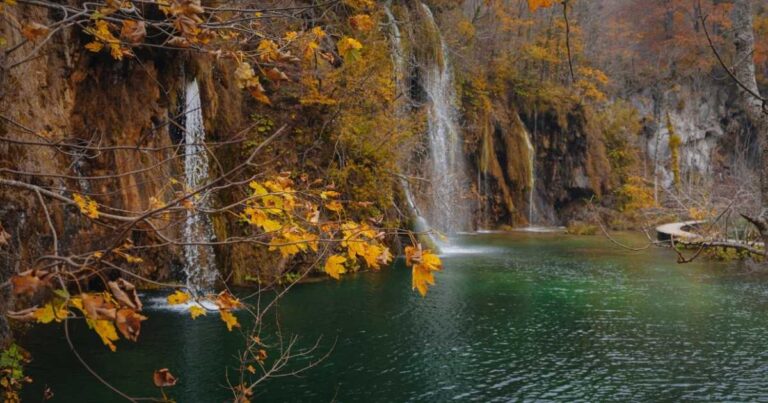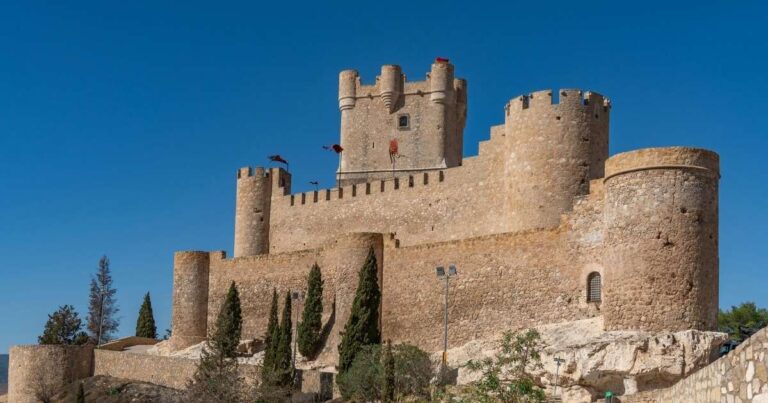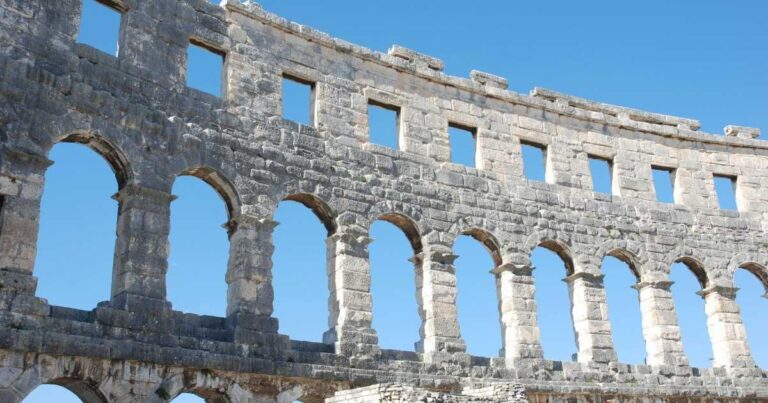Croatia’s Adriatic coast is a dream destination, boasting turquoise waters, ancient cities, and a rich cultural heritage. If you’re planning a trip, two cities likely top your list: Split and Dubrovnik. Both are stunning, historic, and packed with charm, but they offer distinct experiences. Which one is right for you? As someone who’s wandered through both, I’m here to break it down. From their atmospheres and attractions to practical considerations like cost and accessibility, this guide will help you decide whether Split or Dubrovnik is your perfect Croatian getaway.
Why Croatia’s Coast Captivates Travelers
Croatia has skyrocketed in popularity, and it’s no mystery why. The Dalmatian Coast blends Mediterranean beauty with a rich tapestry of history. Roman ruins, medieval walls, and modern beach vibes coexist effortlessly. Split and Dubrovnik, the region’s crown jewels, draw millions each year. But choosing between them can feel like picking your favorite song—it’s personal. Split offers a lively, local feel with easy access to islands, while Dubrovnik dazzles with its cinematic old town and Game of Thrones fame. Let’s dive into what makes each city unique.
Split: The Vibrant Heart of Dalmatia
Split feels like a city that’s always buzzing. It’s Croatia’s second-largest city, but don’t let that intimidate you—it’s got a warm, approachable vibe. Built around the ancient Diocletian’s Palace, Split seamlessly blends history with modern life. You’ll sip coffee where Roman emperors once walked, then hop on a ferry to a nearby island. It’s a place where locals and tourists mingle, creating an authentic atmosphere.
Exploring Diocletian’s Palace
The heart of Split is Diocletian’s Palace, a UNESCO World Heritage Site. Unlike a typical palace, it’s not a single building but a sprawling complex of stone streets, courtyards, and ruins. Walking through, you’ll feel like you’ve stepped into a living museum. The Peristyle, a grand courtyard, is perfect for people-watching. At night, it transforms into a lively scene with live music and candlelit bars. Don’t miss climbing the bell tower of Saint Domnius for panoramic views—it’s a bit of a workout, but the vista is worth every step.
Split’s Beaches and Outdoor Vibes
Split’s coastline is a significant draw. Bacvice Beach, just a short walk from the center, is a sandy spot ideal for swimming or trying picking, a local water game. If you crave nature, Marjan Hill offers hiking trails and stunning lookouts over the city and sea. I spent an afternoon cycling through its pine forests, and it felt like a mini-escape from the urban energy. Split’s outdoor scene is relaxed yet adventurous, perfect for travelers who love a mix of both.
Island-Hopping from Split
One of Split’s most significant advantages is its role as a ferry hub. From the bustling port, you can reach islands like Hvar, Brac, and Vis in under two hours. Hvar is known for its nightlife and lavender fields, while Brac boasts the iconic Zlatni Rat beach. Vis, quieter and less touristy, feels like a hidden gem with its turquoise coves. Day trips are easy, making Split an ideal destination if you want to explore beyond the mainland with minimal hassle.
Dubrovnik: The Pearl of the Adriatic
Dubrovnik is the stuff of postcards. Its medieval walls, orange rooftops, and sparkling sea have earned it the nickname “Pearl of the Adriatic.” Walking through the Pile Gate into the Old Town feels like entering a fairy tale. Yes, it’s touristy—especially if you visit in summer—but its beauty is undeniable. Dubrovnik’s polished charm and cinematic history make it a bucket-list destination.
Walking the City Walls
Dubrovnik’s city walls are a must-do. Stretching nearly two kilometers, they encircle the Old Town and offer jaw-dropping views of the Adriatic and Lokrum Islands. The walk takes approximately two hours and is best done early to avoid crowds and the heat. I remember pausing at every turn, camera in hand, marveling at how the sea seemed to change color with the light. Tickets aren’t cheap, but the experience is unforgettable.
Game of Thrones and Pop Culture
If you’re a Game of Thrones fan, Dubrovnik will feel like stepping onto the set of King’s Landing. From Fort Lovrjenac to the Jesuit Stairs, the city is packed with filming locations. Guided tours are popular, but you can explore on your own with a bit of research. Even if you’re not into the show, the city’s dramatic architecture and history give it a larger-than-life feel. It’s no wonder filmmakers keep returning.
Dubrovnik’s Beaches and Beyond
Dubrovnik’s beaches are more pebbly than Split’s, but they’re no less beautiful. Banje Beach, near the Old Town, combines sea views with proximity to bars and restaurants. For a quieter escape, take a short ferry to Lokrum Island, a nature reserve with rocky shores and peacocks roaming free. Kayaking around the city walls is another highlight—paddling beneath the fortifications at sunset is pure magic.
Comparing the Atmospheres
Split and Dubrovnik have distinct personalities. Split feels like a lived-in city with a youthful, energetic pulse. Locals hang out in the same cafes as tourists, and the nightlife ranges from chill wine bars to thumping clubs. Dubrovnik, by contrast, is more polished and tourist-driven. Its Old Town is pristine, almost like a movie set, but it can feel crowded in peak season. If you prefer a local vibe with a side of history, Split might win you over. If you’re after postcard-perfect beauty and don’t mind crowds, Dubrovnik delivers.
Crowds and Seasonality
Crowds are a significant factor. Dubrovnik’s popularity, boosted by cruise ships and media fame, means its narrow streets can get packed from June to August. Split is busy, too, but its larger size and spread-out attractions make it feel less claustrophobic. For a quieter visit, consider visiting either city in spring or fall. I visited Split in May and Dubrovnik in October, and both felt manageable with pleasant weather.
Cost Considerations
Let’s talk money. Dubrovnik is pricier across the board. Accommodation, dining, and activities like the city walls come at a premium, especially in the Old Town. A decent meal for two, including wine, might cost 50 euros or more. Split, while not cheap, is more budget-friendly. You can find apartments or hostels at lower rates, and meals at konobas (traditional taverns) are often under 30 euros for two. If you’re watching your wallet, Split gives you more bang for your buck.
Accommodation Options
In Split, you’ll find everything from boutique hotels to Airbnb apartments, many within walking distance of the palace. Staying just outside the center can save you money without sacrificing convenience. Dubrovnik’s Old Town has charming but costly guesthouses. For better value, look at areas like Lapad or Ploce, which are a short bus ride away. Both cities fill up fast in summer, so book early.
Dining and Local Cuisine
Croatian food is a treat, and both cities shine here. Split’s markets, such as Pazar, offer fresh produce and local cheeses, making them perfect for a picnic. Restaurants serve Dalmatian classics, such as pasticada (slow-cooked beef) and black risotto. Dubrovnik’s dining scene is more upscale, with seafood-heavy menus and waterfront views. Try octopus peka, a dish cooked under a bell-like lid, for an authentic taste of the region. Split’s casual eateries suit laid-back travelers, while Dubrovnik’s restaurants cater to those seeking a refined experience.
Accessibility and Getting Around
Getting to Split is a breeze. Its international airport connects to major European cities, and the city’s train and bus stations make overland travel easy. Once you’re there, most attractions are walkable, and ferries are well-organized. Dubrovnik’s airport is smaller, with fewer direct flights, and it’s about 20 kilometers from the city. Public buses connect the two, but taxis are pricey. Within Dubrovnik, the Old Town is pedestrian-only, though you’ll need buses or cabs to reach outer areas like Lapad.
Day Trips and Excursions
Split’s location makes it a hub for day trips. Beyond the islands, you can visit Krka National Park for waterfalls or Trogir, a charming UNESCO-listed town. Dubrovnik’s day trips are equally enticing. Mostar in Bosnia and Herzegovina, with its iconic bridge, is a popular choice, as is Montenegro’s Bay of Kotor. Both cities offer plenty of adventure, but Split’s ferry network gives it an edge for island explorers.
Which City Suits Your Travel Style?
Your choice depends on what you’re after. Split is for travelers who love a lively, local vibe with easy access to islands and nature. It’s ideal for budget-conscious adventurers or those seeking a blend of urban and outdoor experiences. Dubrovnik is for romantics and history buffs who don’t mind splurging for a polished, cinematic escape. If you’re torn, why not visit both? They’re only a three-hour drive or bus ride apart.
For Families
Families will find Split more accommodating. Its sandy beaches, such as Bacvice, are kid-friendly, and the city’s parks and casual dining options make it a stress-free destination. Dubrovnik’s cobblestone streets and steep prices can be challenging with young kids, though its walls and boat trips are enjoyable for older children.
For Couples
Couples can’t go wrong with either. Split’s sunset strolls along the Riva promenade and cozy wine bars are endlessly romantic. Dubrovnik’s dramatic views and fine dining make it an ideal choice for a romantic date night. If you’re planning a proposal, Dubrovnik’s walls at dusk might seal the deal.
For Solo Travelers
Solo travelers will feel at home in both cities. Split’s social hostels and bustling cafes make it easy to meet people. Dubrovnik’s compact Old Town is safe and walkable, though its higher costs might stretch a solo budget. Join a group tour in either city to connect with others.
Conclusion: Making Your Choice
Split and Dubrovnik are two sides of Croatia’s dazzling coin. Split offers a vibrant, affordable base with endless day-trip options, ideal for those who want a local feel and flexibility. Dubrovnik offers unmatched beauty and history, making it perfect for a once-in-a-lifetime splurge. Think about your priorities—budget, vibe, activities—and you’ll know which city calls your name. Better yet, if time allows, spend a few days in each to soak up the best of Dalmatia. Croatia’s coast is waiting to steal your heart.
FAQS
Q1: How many days should I spend in Split or Dubrovnik?
Three to four days in either city is ideal. This gives you time to explore the main sights, enjoy the beaches, and take a day trip without feeling rushed.
Q2: Is it easy to travel between Split and Dubrovnik?
Yes, buses run regularly and take about three to four hours. Ferries are another option in summer, though they’re less frequent. Renting a car is also straightforward.
Q3: Which city is better for a budget traveler?
Split is generally more budget-friendly, with lower accommodation and dining costs. Dubrovnik’s prices are higher, especially in the Old Town.
Q4: Are Split and Dubrovnik safe for tourists?
Both cities are very safe. Standard precautions, such as watching your belongings in crowded areas, are usually sufficient. Solo travelers, including women, report feeling comfortable.
Q5: Can I visit Split or Dubrovnik in winter?
Yes, both are quieter in winter, with mild weather. Some attractions or ferries may have reduced hours, but the cities’ charm remains, and you’ll avoid summer crowds.







